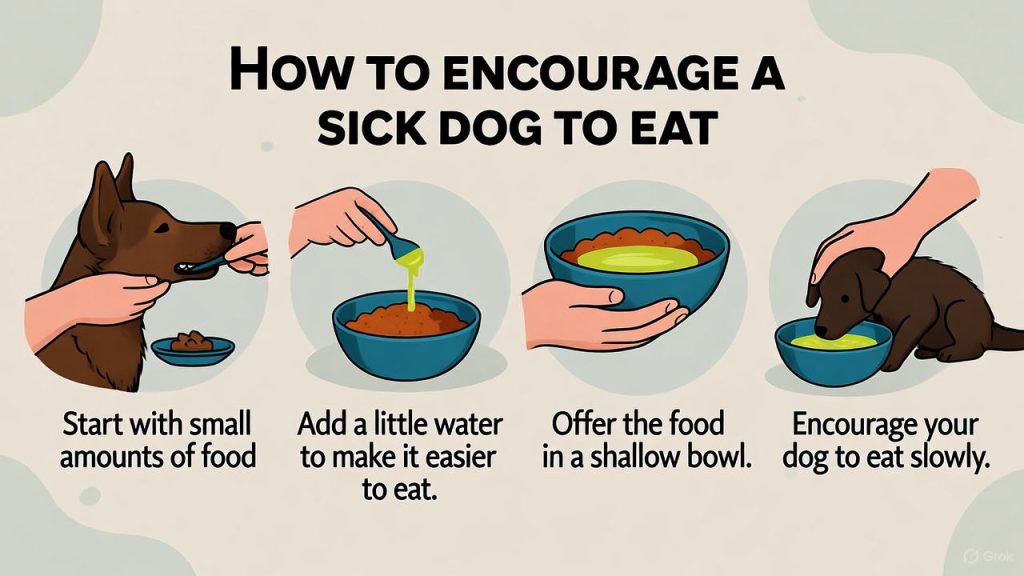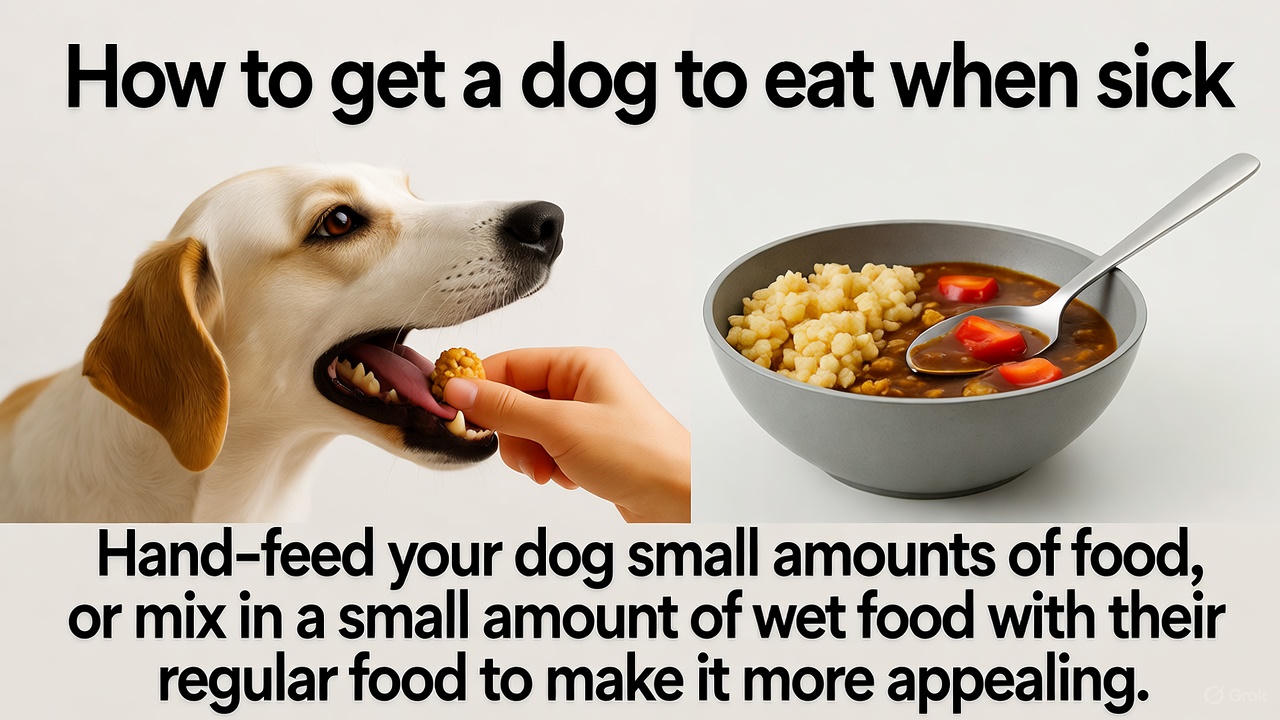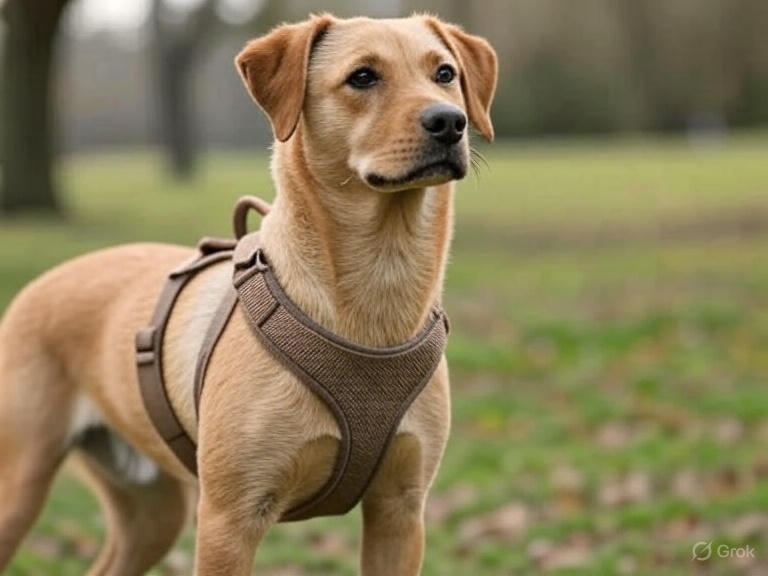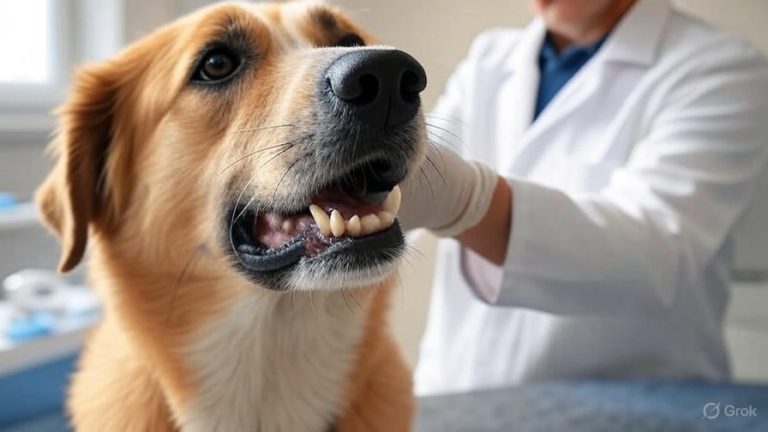How to Get Your Dog to Eat When Sick?
Watching your beloved dog turn away from their food bowl can break your heart. When your furry friend refuses to eat during illness, worry sets in fast. You’re not alone in this struggle. Many pet owners face this challenge when their dogs feel unwell.
Loss of appetite in sick dogs happens for many reasons. Your dog might feel nauseous, have a sore throat, or simply lack the energy to eat. The good news is that you can take several practical steps to encourage your sick pup to eat again. This guide walks you through proven methods to tempt your dog’s appetite and support their recovery.
Why Sick Dogs Stop Eating
Before jumping into solutions, you need to understand why your dog won’t eat. Illness affects dogs differently than humans. When dogs feel sick, their natural instinct tells them to rest and conserve energy. This often means skipping meals.
Nausea ranks as one of the top reasons sick dogs refuse food. Just like you might avoid eating when your stomach feels queasy, dogs do the same. Stomach issues, infections, and medications can all trigger nausea in your pet.
Pain also plays a major role in appetite loss. Dental problems, mouth injuries, or throat infections make eating uncomfortable. Your dog might want to eat but simply can’t manage the pain that comes with chewing and swallowing.
Fever changes everything for a sick dog. When body temperature rises, metabolism shifts. Dogs with fevers often lose interest in food completely. Their bodies focus all energy on fighting off infection rather than digestion.
Some medications cause appetite loss as a side effect. If your vet recently prescribed new medicine, check whether reduced appetite is listed as a common reaction. This information helps you plan the best approach to feeding your sick dog.
When to Call Your Veterinarian
You should never ignore a dog that refuses to eat. While this guide offers helpful tips, some situations require immediate veterinary care. Time matters when your dog’s health is at stake.
Contact your vet right away if your dog hasn’t eaten anything for 24 hours. Puppies and small dogs face even more urgent timelines. They can become dangerously dehydrated much faster than larger dogs.
Watch for other warning signs alongside appetite loss. Vomiting, diarrhea, lethargy, and difficulty breathing all signal serious problems. These symptoms combined with refusing food mean your dog needs professional medical attention now.
Dehydration develops quickly in sick dogs who won’t eat or drink. Check your dog’s gums. They should feel wet and slippery. Dry, sticky gums indicate dehydration. You can also test skin elasticity by gently pulling up the skin on your dog’s neck. If it doesn’t snap back quickly, your dog is dehydrated.
Warming Up Dog Food
Temperature makes a huge difference in how appealing food smells to your dog. Dogs rely heavily on their sense of smell when deciding whether to eat. Warming food releases more aroma, which can trigger your sick dog’s appetite.
Take your dog’s regular food and warm it slightly. You can use a microwave for 10-15 seconds or let it sit in warm water. Make sure the food is warm, not hot. Test it with your finger before serving. You want it just slightly warmer than room temperature.
The warmth mimics fresh prey, which dogs find naturally appealing. This trick works especially well for wet dog food or canned varieties. Dry kibble benefits from this technique too. You can add warm water or low-sodium broth to soften and warm it at the same time.
Never serve food straight from the refrigerator to a sick dog. Cold food has less smell and can upset an already sensitive stomach. Room temperature or slightly warmer always works better for encouraging a reluctant eater.
Offering Bland Food Options
When your dog feels sick, rich or fatty foods might seem too heavy. A bland diet often works better for sensitive stomachs. Vets frequently recommend this approach for dogs recovering from illness.
Boiled chicken and white rice creates the classic bland meal for sick dogs. Cook boneless, skinless chicken breast in plain water. Don’t add any seasonings, oils, or butter. Shred the chicken into small, easy-to-chew pieces. Mix it with plain white rice in a ratio of one part chicken to two parts rice.
Boiled ground turkey serves as another excellent bland protein option. Cook it thoroughly and drain all the fat. The mild flavor and soft texture make it easy for sick dogs to eat and digest.
Plain pumpkin puree (not pie filling) works wonders for dogs with upset stomachs. The fiber helps settle digestive issues. Mix a spoonful into their regular food or bland diet. Most dogs find the sweet taste appealing even when they don’t feel well.
Sweet potato offers similar benefits to pumpkin. Boil or bake it plain, then mash it thoroughly. The soft consistency makes it easy for sick dogs to eat, and the natural sweetness often tempts picky eaters.
Adding Flavor Enhancers
Sometimes your sick dog needs extra motivation to eat. Adding flavor boosters to their regular food can make all the difference. These additions create stronger smells and tastes that appeal to reduced appetites.
Low-sodium chicken broth or bone broth works like magic for many sick dogs. Pour it over dry kibble to soften the food and add enticing flavor. You can also offer it separately as a way to get fluids into your dog. Make sure the broth contains no onions, garlic, or excessive salt.
A small amount of wet dog food mixed into dry kibble increases appeal. The moisture and stronger scent often convince reluctant dogs to take a few bites. Start with just a tablespoon and see if it makes a difference.
Baby food can work in a pinch, but read labels carefully. Only use varieties made with a single meat like chicken or turkey. Avoid any baby food containing onion powder or garlic, as these ingredients are toxic to dogs.
A tiny bit of plain, unsalted butter melted over food adds richness. Use this sparingly, as too much fat can upset a sensitive stomach. A quarter teaspoon is enough for small dogs, while larger dogs can handle up to a full teaspoon.
Hand Feeding Your Sick Dog
Personal attention and care can encourage your dog to eat when they feel miserable. Hand feeding creates a connection and shows your dog that eating is safe and desirable.
Sit on the floor next to your dog in a quiet, comfortable spot. Keep the atmosphere calm and stress-free. Loud noises or chaos in the house might make your sick dog even less interested in food.
Take small pieces of food in your fingers and offer them gently to your dog. Let them sniff first. Don’t force food into their mouth. If they take a piece, praise them softly and offer another. Patience is key here.
Some dogs respond better to food offered on a spoon. This works especially well for wet food or mashed options. Hold the spoon near their nose so they can smell it, then slowly bring it to their mouth.
Try different positions if your dog seems uncomfortable. Some sick dogs eat better when they’re lying down. Others prefer to stand. Watch your dog’s body language and adjust accordingly.
Making Food More Appealing
Texture can be just as important as taste for sick dogs. Changing the consistency of food might convince your dog to eat when their regular kibble doesn’t work.
Soften dry kibble by adding warm water or broth. Let it soak for 5-10 minutes until it reaches a mushy consistency. This makes food easier to chew and swallow, which matters if your dog has mouth pain or feels weak.
Mash wet food into a smooth paste if your dog struggles with chunks. A fork or potato masher works perfectly for this. The smooth texture slides down more easily for dogs with sore throats or nausea.
Try cutting food into tiny pieces if you’re offering cooked chicken or other solid foods. Smaller portions seem less overwhelming to a dog with no appetite. They might manage a few small bites when a full meal seems impossible.
Mix dry and wet food together if your dog usually eats just one type. The combination creates new textures and smells that might spark interest. The moisture from wet food also makes dry kibble easier to eat.
Creating a Calm Eating Environment
Stress and anxiety can kill appetite even faster when a dog already feels sick. Your dog needs a peaceful, safe space to eat during recovery.
Move the food bowl to a quiet area away from other pets. Dogs often feel vulnerable when they’re sick. Having to compete for food or worry about other animals adds stress they don’t need.
Turn down loud music or television. Reduce household activity around feeding time. Your sick dog needs calm surroundings to feel comfortable enough to eat.
Use your dog’s favorite bowl in their preferred eating spot. Familiar items provide comfort during illness. Don’t suddenly change where or how you present food unless your dog shows a clear preference for something different.
Stay nearby while your dog eats, but don’t hover. Your presence provides reassurance, but staring or standing too close might make them feel pressured. Find a balance that works for your dog’s personality.
Feeding Smaller Portions More Often
A full bowl of food can overwhelm a sick dog with no appetite. Breaking meals into smaller portions spread throughout the day works much better.
Offer food five or six times daily instead of the usual one or two meals. Keep each portion small. Just a few tablespoons might be enough for each feeding. This approach prevents your dog from feeling overwhelmed while still getting needed nutrition.
Don’t leave food sitting out all day. Sick dogs often ignore bowls left on the floor. Instead, present fresh food at each feeding time, wait 15-20 minutes, then remove the bowl if your dog doesn’t eat. This creates structure and makes food seem more valuable.
Track how much your dog eats at each feeding. Write down the amounts so you can report accurate information to your vet if needed. This also helps you identify which times of day your dog eats best.
Adjust portion sizes based on your dog’s response. If they eat everything at one feeding, offer slightly more next time. If they ignore the food completely, try a smaller amount or different timing.

Using High-Value Treats as Meals
Sometimes you need to throw the rule book out the window. When your dog refuses everything else, high-value treats might save the day.
Small pieces of cooked chicken breast often work as a last resort. Even sick dogs usually can’t resist real chicken. Offer it plain, in tiny pieces, as frequently as your dog will accept it.
Plain scrambled eggs provide protein and fat in an easily digestible form. Cook them without butter, oil, or seasonings. The soft texture and mild flavor appeal to most dogs, even when they feel terrible.
Tiny amounts of plain Greek yogurt offer probiotics that support digestive health. Many dogs love the creamy texture and tangy taste. Start with just a teaspoon to see how your dog’s stomach handles it.
Small pieces of cheese can tempt a stubborn dog to eat. Use mild varieties like mozzarella or cheddar. Remember that cheese is rich, so use it sparingly and only if other options fail.
Keeping Your Dog Hydrated
Hydration matters even more than food when your dog is sick. Dogs can survive longer without food than without water. Dehydration develops quickly and creates serious complications.
Always keep fresh, clean water available. Change it several times throughout the day. Some dogs prefer fresh water and will drink more when you frequently replace their supply.
Ice cubes can entice dogs who won’t drink from their bowl. Many dogs enjoy crunching ice, and it provides hydration in a different form. You can also freeze low-sodium broth into ice cubes for added appeal.
Offer water from your hand if your dog won’t approach their bowl. Cup water in your palm and bring it to your dog. This personal approach sometimes works when nothing else does.
Add water to all food offerings. Wet food mixed with extra water becomes more like soup. This sneaky method gets fluids into your dog while they’re eating.
Trying Different Food Textures
Your sick dog might have developed temporary preferences for certain food types. Experimenting with different textures can reveal what they’re willing to eat.
Smooth pate-style wet food slides down easily. This works well for dogs with sore throats or nausea. The uniform texture eliminates chunks that might seem difficult to handle.
Chunky stews provide variety and strong scents. Some dogs prefer food they can see and identify. The gravy in these foods also adds moisture and flavor.
Dry kibble offers crunch that some dogs find satisfying. Even sick dogs might enjoy their regular food if it’s presented differently. Try moistening only part of the kibble to create variety in one bowl.
Semi-moist food falls between wet and dry options. These products often have strong scents and soft textures that appeal to sick dogs. Check ingredients to ensure quality.
Elevating Food Bowls
Physical comfort affects eating ability. Your sick dog might struggle with standard floor-level bowls, especially if they have neck pain, arthritis, or respiratory issues.
Raised feeders bring food up to a more comfortable height. Dogs don’t need to bend down as far, which reduces strain. This simple change sometimes makes all the difference for a dog who feels too weak or uncomfortable to eat from the floor.
You don’t need expensive equipment. Stack books under the food bowl or use an overturned pot. Test different heights to find what works best for your dog’s size and condition.
Some dogs prefer eating while lying down when they’re sick. Place the bowl right in front of your dog’s face as they rest. This requires minimal effort from your pet.
Maintaining a Regular Schedule
Routine provides comfort and security. Even when your dog is sick, keeping a predictable feeding schedule helps them know what to expect.
Feed at the same times each day. Your dog’s body anticipates food at certain times. Sticking to this pattern might trigger hunger cues even when appetite is low.
Follow the same feeding ritual you normally use. If you usually prepare food in front of your dog, keep doing that. If you ring a dinner bell or use a specific phrase, maintain those habits.
Don’t constantly offer food outside of scheduled times. This can actually reduce appetite by removing the anticipation that comes with mealtimes. Stick to your established schedule as much as possible.
Using Appetite Stimulants
Sometimes home remedies aren’t enough. Your vet might recommend appetite stimulants to help your dog eat during recovery.
Prescription medications like mirtazapine can jumpstart appetite in sick dogs. These drugs work on brain chemistry to create hunger. Your vet will determine if this option makes sense for your dog’s specific condition.
Capromorelin is another prescription option designed specifically for appetite stimulation in dogs. It mimics hormones that signal hunger. This medication requires veterinary approval and monitoring.
Never give your dog human appetite stimulants or supplements without vet approval. Many medications safe for people are dangerous for dogs. Always consult your veterinarian before trying any new medication or supplement.
Supporting Recovery with Love
Your sick dog needs more than just food. Emotional support and comfort play huge roles in recovery and appetite.
Spend extra time with your sick dog. Physical presence reassures them. Pet them gently, speak in soft tones, and offer comfort. This emotional connection can reduce anxiety that suppresses appetite.
Keep your dog comfortable with soft bedding in a warm, quiet area. Pain and discomfort reduce interest in food. A cozy resting spot helps your dog feel better overall, which might improve appetite.
Follow all veterinary instructions carefully. Give medications on schedule, attend follow-up appointments, and report any changes in your dog’s condition. Proper medical care addresses the root cause of appetite loss.
Stay patient and positive. Your anxiety transfers to your dog. If you stress about them not eating, they pick up on that tension. Stay calm and optimistic. Your dog will eat when they’re ready.
Recovery Takes Time
Appetite returns gradually as your dog heals. Don’t expect instant results from these techniques. Recovery happens at its own pace.
Celebrate small victories. If your dog takes a few bites, that’s progress. If they drink extra water, that’s success. Every small step toward normal eating habits counts.
Track improvements in a journal. Write down what your dog eats, when they eat, and how much. This record helps you see progress that might not be obvious day-to-day. It also provides valuable information for your vet.
Be prepared for setbacks. Some days will be better than others. Your dog might eat well one day and refuse food the next. This pattern is normal during recovery from illness.
Remember that your dog relies on you during this difficult time. Your efforts to encourage eating show love and dedication. Even when frustrated, keep trying different approaches. You know your dog better than anyone. Trust your instincts about what might work.
Most dogs gradually regain their appetite as they heal. The techniques in this guide give you a toolkit to support your furry friend through recovery. With patience, creativity, and proper veterinary care, your dog will be back to their normal eating habits before you know it.







